

E-Books → Little bits Curiosities about computers
Published by: voska89 on 29-11-2022, 12:08 |  0
0
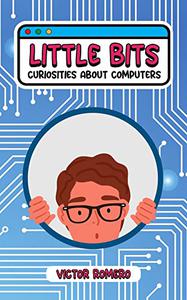
Little bits: Curiosities about computers by Víctor Romero
English | 2022 | ISBN: N/A | ASIN: B0B9K6GXS5 | 140 pages | EPUB | 1.69 Mb
How to avoid internet trolls.Who are the guardians of the seven keys of the Internet?What is the all-time best-selling computer?How is the Internet recorded for history?
E-Books → Computers in Amateur Radio
Published by: voska89 on 22-11-2022, 09:16 |  0
0
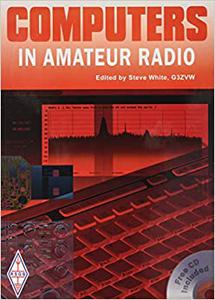
Steve White, "Computers in Amateur Radio"
English | 2013 | ISBN: 1905086857 | PDF | pages: 257 | 31.3 mb
Tv Shows → NOVA S49E13 Computers v Crime 1080p HEVC x265-MeGusta
Published by: Emperor2011 on 13-10-2022, 19:16 |  0
0

Science documentaries about various topics.
652.22 MB | 00:53:30 | 6520 Kbps | V_MPEGH/ISO/HEVC | 1920x1080 | A_AAC-2, 48 Khz, 2 channels
Genre: Documentary
Tv Shows → NOVA S49E13 Computers v Crime 720p HEVC x265-MeGusta
Published by: Emperor2011 on 13-10-2022, 05:05 |  0
0

Science documentaries about various topics.
443.76 MB | 00:53:30 | 4501 Kbps | V_MPEGH/ISO/HEVC | 1280x720 | A_AAC-2, 48 Khz, 2 channels
Genre: Documentary
E-Books → Can Computers Create Art
Published by: voska89 on 12-09-2022, 12:57 |  0
0
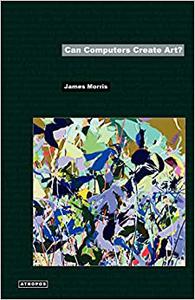
James Morris, Wolfgang Schirmacher, "Can Computers Create Art?"
English | 2009 | ISBN: 0974853488 | PDF | pages: 147 | 3.7 mb
E-Books → Computers and Information Technology
Published by: voska89 on 3-08-2022, 23:25 |  0
0
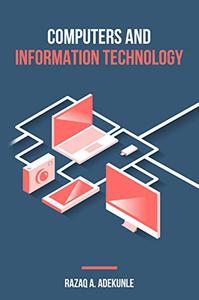
Computers and Information Technology by RAZAQ ADEKUNLE
English | 2020 | ISBN: N/A | ASIN: B08R69NF63 | 135 pages | EPUB | 0.17 Mb
Computer career opportunities are growing faster than average in the overall economy. People who have the necessary information technology skills and knowledge are in demand and have a tremendous number of choices. The scope of the careers in computer information systems field is extensive.
Video Training → Udemy - Basic Structure of Computers
Published by: voska89 on 2-08-2022, 14:54 |  0
0
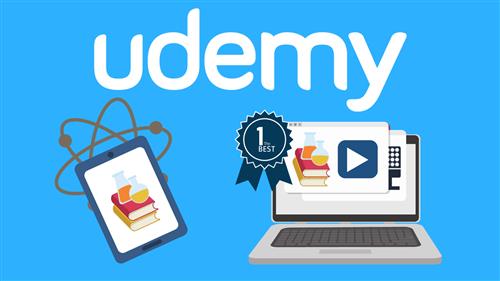
Instructors: Tech Tutorials | 4 sections • 15 lectures • 1h 5m
Video: MP4 1280x720 44 KHz | English + Sub | Updated 9/2021 | Size: 318 MB
Introduction to the basic structure of computer hardware and software
What you'll learn
E-Books → Handheld Computers for Doctors
Published by: voska89 on 29-07-2022, 20:40 |  0
0

Handheld Computers for Doctors By Mohammad Al?Ubaydli(auth.)
2003 | 142 Pages | ISBN: 0470858990 | PDF | 2 MB
This is the first book to address the uses of handheld computers within clinical practice and considers the many different possible applications of handheld computers in a medical environment. The book champions the idea that handheld computers have a significant role to play in the future of clinical practice. It shows why and how these devices can help reduce paperwork, and how to use the technology without waiting for the IT department's latest expensive, complicated and overdue solution. The book is in three sections:Explains that handhelds, far from futuristic gadgets, are today's technology benefiting clinicians around the world. The ten chapters guide the user through all possible applications of these machines. Looks at three teams that put the handhelds to different clinical uses. Explains the tools and techniques that are useful in introducing the technology to a group.If you work in hospital or community medicine, you can take advantage of technology that is affordable, powerful, easy and effective. Handheld computers can be used for education, administration and clinical practice, and in association with colleagues to support communication and teamwork.Content: Chapter one So, You'd Like a Handheld (pages 1-5): Chapter two Choosing Hardware (pages 7-12): Chapter three Choosing Software for Yourself (pages 13-16): Chapter four Organizing Your Life (pages 17-23): Chapter five Taking Lecture Notes (pages 25-29): Chapter six Keeping Track of Patient Details (pages 31-36): Chapter seven Medical References (pages 37-42): Chapter eight Reading Electronic Books (pages 43-46): Chapter nine Games for Ward Rounds (pages 47-51): Chapter ten Carrying the Web with You (pages 53-57): Chapter eleven Handhelds for Patients (pages 59-63): Dr Laura DeanChapter twelve Case 1 - The Haematology Department (pages 67-73): Chapter thirteen Case 2 - The General Practice Surgery (pages 75-84): Chapter fourteen Case 3 - The Acute Medicine Department (pages 85-98): Chapter fifteen Making Change Happen (pages 101-106): Chapter sixteen Talking to the IT Department (pages 107-111): Chapter seventeen Choosing Software for the Team (pages 113-116): Chapter eighteen Training (pages 117-119): Chapter nineteen Electronic Documents (pages 121-128): Chapter twenty Getting the Funding (pages 129-137):
Video Training → Udemy - How Computers Work
Published by: voska89 on 25-07-2022, 14:00 |  0
0
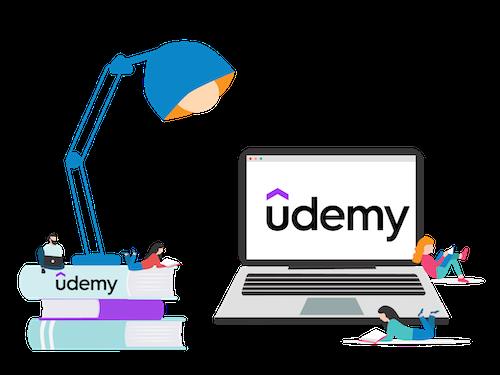
Published 07/2022
MP4 | Video: h264, 1280x720 | Audio: AAC, 44.1 KHz, 2 Ch
Genre: eLearning | Language: English + srt | Duration: 44 lectures (3h 25m) | Size: 1.41 GB
An explanation that speaks to your heart
E-Books → Ancient Computers, Part I - Rediscovery, Edition 2
Published by: voska89 on 16-07-2022, 16:33 |  0
0
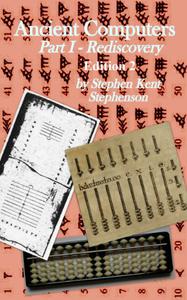
Stephen Kent Stephenson, "Ancient Computers, Part I - Rediscovery, Edition 2"
English | 2013 | ISBN: 1490964371 | ASIN: B00DVPPQ78 | EPUB | pages: 74 | 1.0 mb
Ancient Computers is an excellent introduction to the calculating methods of diverse cultures across time. A mixture of history and practical techniques for understanding and using these ancient devices brings the tools of these long-forgotten civilizations to a wide audience. Stephenson writes in an easy-to-understand and accessible manner and the use of diagrams is extensive. Want know how to use an abacus or where it came from? This is the book for you! The book is appropriate for high school audiences and above. Dag Spicer Senior Curator Computer History Museum Mountain View, CA ===== The author ... makes two points that deserve wider dissemination. The first is that he sees the central dividing line of the Salamis Tablet as allowing an additive side and a subtractive side ... and notes that this approach, 'reduces the number of pebbles needed tremendously'. It also makes many calculations easier. One cannot argue with his claims of increased efficiency and this point deserves further investigation. The author's second substantive point is that in attempting to understand ancient mathematics, historians need to pay more attention to the available tools, technology, notation, and terminology to see how particular algorithms may have been performed. The author has a video of himself computing the square root of 2 using a set of Salamis Tablets following Heron's method. It takes him 25 minutes [to achieve the four sexagesimal digit precision of Yale tablet YBC 7289]. His argument is that [making and] using only [mathematical reference] tables and writing intermediate [cuneiform] results on clay would take a lot longer. From review by Prof. Duncan Melville,http://www.stlawu.edu/user/348, in Aestimatio,http://www.ircps.org/aestimatio/9/294-297. ===== People, especially historians, have long struggled to appreciate and understand how Ancient Romans, Greeks, Egyptians, and Babylonians, et al, were able to do their arithmetic calculations. Many say the Ancients "probably" used line abacuses or abaci, a.k.a. counting boards. But most then trivialize the possible impact that use would have on the Ancient cultures because they really don't think those abaci would be very powerful and that they would be extremely hard to use. The (re-)discovery this book documents and explores materialized from the author's experiences in engineering, with a knowledge that design compromises often have to be made; computer programming, especially the different number bases used; the hobby use of a Japanese abacus called the Soroban; and study of the Ancients' numbers and culture. The bottom line is that the Ancients had a powerful and lightning fast computer; powerful and fast compared to any other calculation method available to them in their time. Features included: - multi-base number modes: e.g., sexagesimal, decimal, duodecimal, or nonary; - operating on those numbers in two parts: a signed fraction of the base and a signed exponent of the base, equivalent to scientific notation; - easy and low-cost expandability; and - built-in error checking! On the "standard" Ancient line abacus doing base-10 calculations, the fraction could have 10 significant digits and the exponent 4. Certainly enough for most modern engineering or scientific problems. If you need more, though, just scribe a few more lines on the abacus and add a few more pebbles to your pouch! By the way, 170 small pebbles will suffice for any problem on the "standard" line abacus. They fit in a pouch that can be easily and comfortably carried in a man's trouser pocket. I hope you find Ancient Computers interesting and useful, -Steve Stephenson, July 15, 2010 ===== Edition 2 adds two appendices: N: Nonary Abacus as Candidate for Modern Electronic Implementation; and V: Visualizing the Basis of Abacus Arithmetic (Using Colored Chip Models). -Steve Stephenson, July 2013



